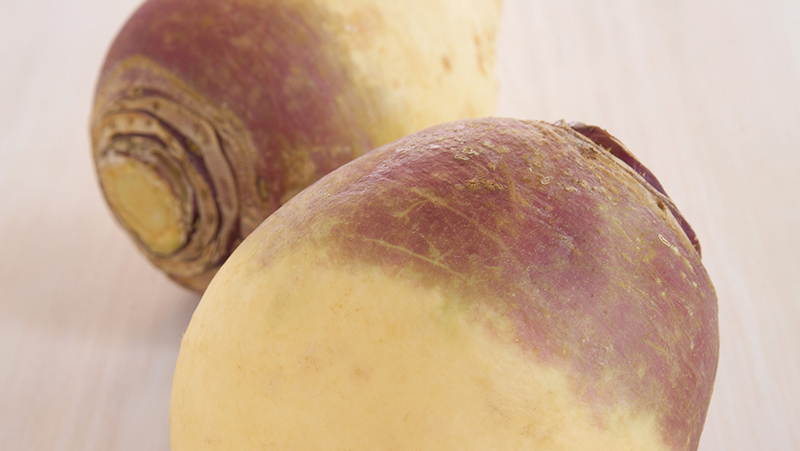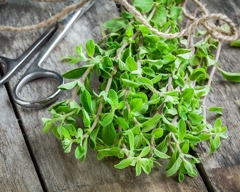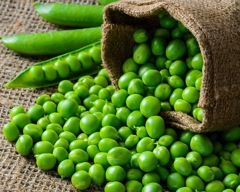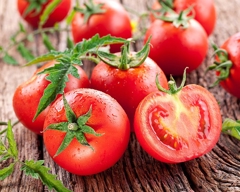Yates Account
Join now
Create a Yates account today!
Sign up to join the Yates Garden Club for monthly e-mails packed with seasonal inspiration, tips for success & exclusive promotions.
Plus if you’re a Garden Club member you can take part in the Yates Growing Community - a blog to share successes, get advice & win prizes in fun challenges along the way!

Forgot password
Enter the email address associated with your account, and we'll email you a new password.

Swedes go by a variety of different names, including neeps in Scotland, rutabaga in other parts of Europe and the United states and confusingly also Russian, Swedish or yellow turnips, though swedes are not turnips, although they’re very closely related. Swedes tend to be larger than turnips, with a rounded shape, purple coloured tops and creamy yellow flesh (which distinguishes them from turnips, which have white flesh). Try roasting or mashing swedes or adding them to soups and casseroles. They have a sweet, cabbage like taste and are a great potato substitute.
How to grow swede in a garden
- Choose a sunny spot in your garden with well-drained soil. Enrich with Yates Thrive Natural Blood & Bone with Seaweed.
- Sow seed direct into rows. Cover lightly with Yates Black Magic Seed Raising Mix and water well.
- Water regularly. Once seedlings emerge, thin seedlings to 10 cm apart. If plants are slow, give weekly side dressings of Yates Thrive Natural Fish Seaweed+ Plant Food Concentrate.
- Harvest roots while young and tender. Sow successive crops every 3-4 weeks to extend your harvest window.

How to grow swede in a pot
- Choose a pot at least 300 mm wide and deep. Fill with quality potting mix, such as Yates Premium Potting Mix. Place the pot in a sunny position.
- Sow seed direct, planting them in clumps of 2-3 seeds. Cover lightly with Yates Seed Raising Mix and water well.
- Water regularly. Once seedlings emerge, thin seedlings so that they are not overcrowded. Feed weekly with Yates Thrive Natural Fish Seaweed+ Plant Food Concentrate.
- Harvest roots while young and tender.
Large, tender purple and cream roots with rich yellow flesh. A hardy variety.
Growing tips
- Acid soils (those where azaleas and camellias flourish) will also appreciate the addition of some Yates Hydrangea Pinking Liquid Lime & Dolomite, which will sweeten the soil (raise pH) to the swede’s liking.
- Provide plenty of water, particularly during warmer weather, to avoid the vegetable drying out.
More Plants
Onion
They may make you cry, but onions are worth the tears! They can impart such a sweet or savoury flavour to your dishes, depending on how they’re used.
Shallots
Shallots can be grown from seed or 'sets' (small dried bulbs). They're a versatile ingredient that adds real depth and complexity to your dishes. The subtle flavour profile is great for soup, stews, salad, stir fries and sauces.
Lettuce
The perfect salad leaf or sandwich filler! Here's how to easily grow lettuce in your garden or in pots.
Melons
Watermelons, rockmelons and honeydew – the quintessential summer fruit trio! They’re oh-so-sweet, juicy and delicious when eaten straight from the fridge
Recommended products
Yates Thrive Natural Blood & Bone with Seaweed
A certified organic garden input boosted with NZ Seaweed to gently nourish plants, enrich the soil and encourage a strong healthy root system.
Yates Thrive Natural Fish & Seaweed+ Plant Food Concentrate
A complete plant food enriched with natural fish, seaweed, humates, molasses and more - boosted with NPK to improve plant and soil vitality.
Yates Premium Potting Mix
A premium potting mix, ideal for all potted plants and shrubs, including ornamentals, fruit trees, vegies and herbs.
Yates Black Magic Seed Raising Mix
Specially formulated for trouble-free seed raising in trays (or outdoor seed sowing direclty into the ground) and propagation of cuttings.
Yates Hydrangea Pinking Liquid Lime & Dolomite
Apply to assist hydrangeas to change flowers to pink colour. Also a liquid lime & dolomite to raise soil pH instead of using dusty powders.





















Share
Share this article on social media